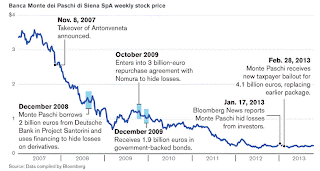We know that the Dow Jones Industrial Average is the most widely covered and watched index in the world for obvious reasons. The obvious is: not because it tracks the American economy, but, because everyone is so much used to using it; its long history backs it up.
There are at least two problems with DJIA: It includes only 30 stocks compared to over 6000 listed stocks in the country. Consequently, the total market value of DJIA index stocks is too tiny compared to that of all the listed companies. Worse still is DJIA is a price-weighted, as opposed to free-float capitalization weighted, average. These issues make DJIA not only meaningless, but also useless. Yet, the world talks about it all the time.
The S&P-500 supplies far better information about how the US economy is doing on a relative basis compared to DJIA.
Let's come to the Indian markets. What we see is that people are no different wherever you go: the collective human behavior remains the same.
The BSE Sensex is the most gauged index for the Indian market. It also has only 30 stocks in the index, and is a poor indicator of the Indian market compared to even S&P CNX Nifty which has only 50 stocks in the index. Both Sensex and Nifty are not great indicators of the economy. However, the fact that India does not have too many good companies makes both of these indices relatively less stupid compared to DJIA.
You can see how far these indices go in terms of tracking their respective economies:
As we can see these indices are not that good at what they are supposed to be doing. The index setters are not able to realize the fact that times have changed, we are no more in a manual-labor economy, as the number of companies and sectors have increased manifold. Automation-led economy is here to stay, and it is time that we adapt ourselves to these facts soon enough.
While the S&P-500 appears adequate, for other indices, the obvious fix is to do a revamp, and include more number of companies. The index should be tracking at least 75% of the total market value of the listed firms in the country. If that is not possible, it is fine, but let's not talk about them in the same breath, though.
It seems that DJIA has become sort of a brand not to be ignored. It's amazing how stupid habits remain stupid for very long.
It seems that DJIA has become sort of a brand not to be ignored. It's amazing how stupid habits remain stupid for very long.
The conclusion is that unless one is investing in the index itself, which actually is not a bad idea at all, it is not all that important to track these indices. The S&P-500 is fine; for other index buyers where there isn't much choice, whatever index is available should be taken. They will eventually do well because the index comprises at least a diversified mix of good businesses; something to thank for.
Better yet, if it suits, is to do some selective stock picking for long-term profit-making.
Better yet, if it suits, is to do some selective stock picking for long-term profit-making.











